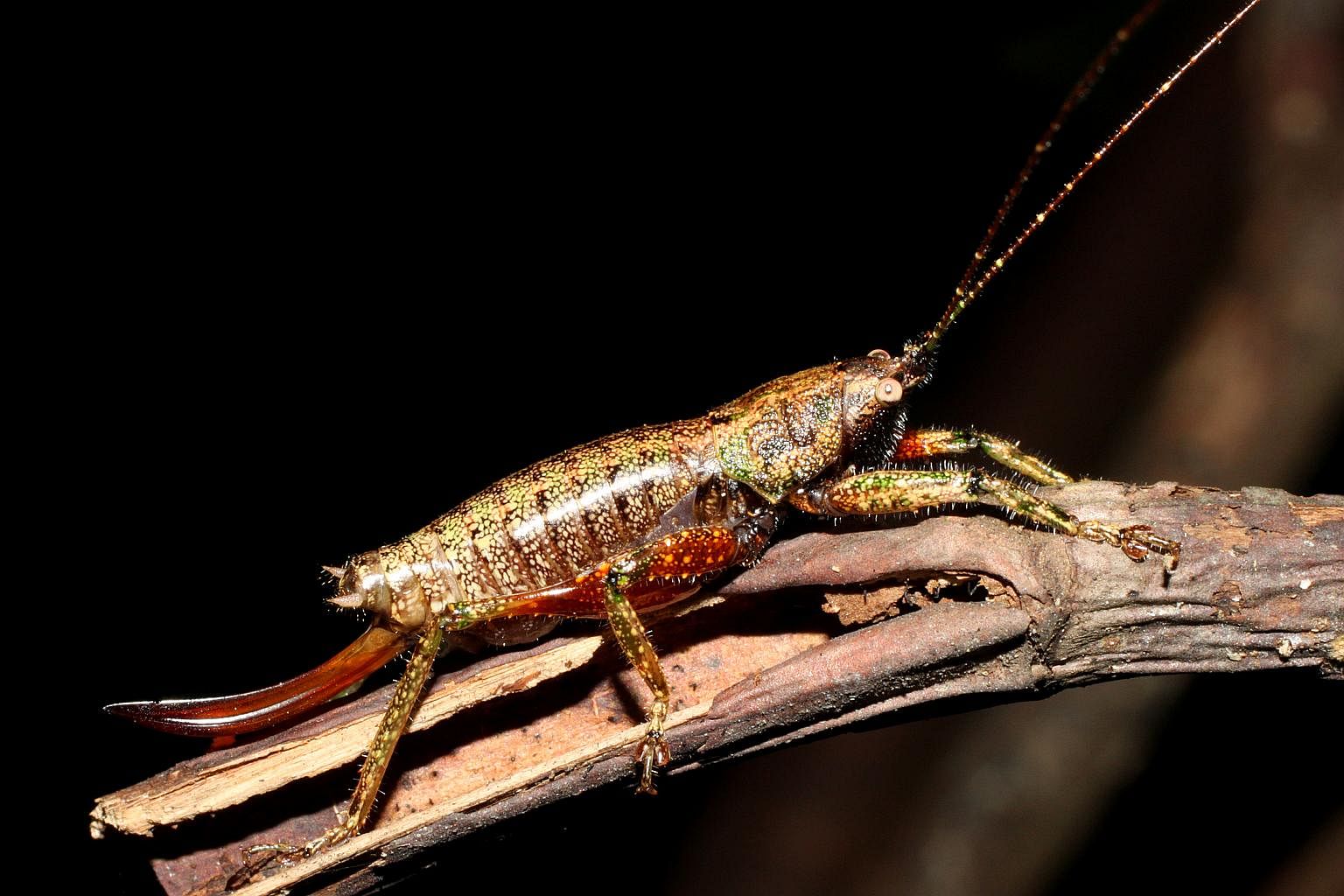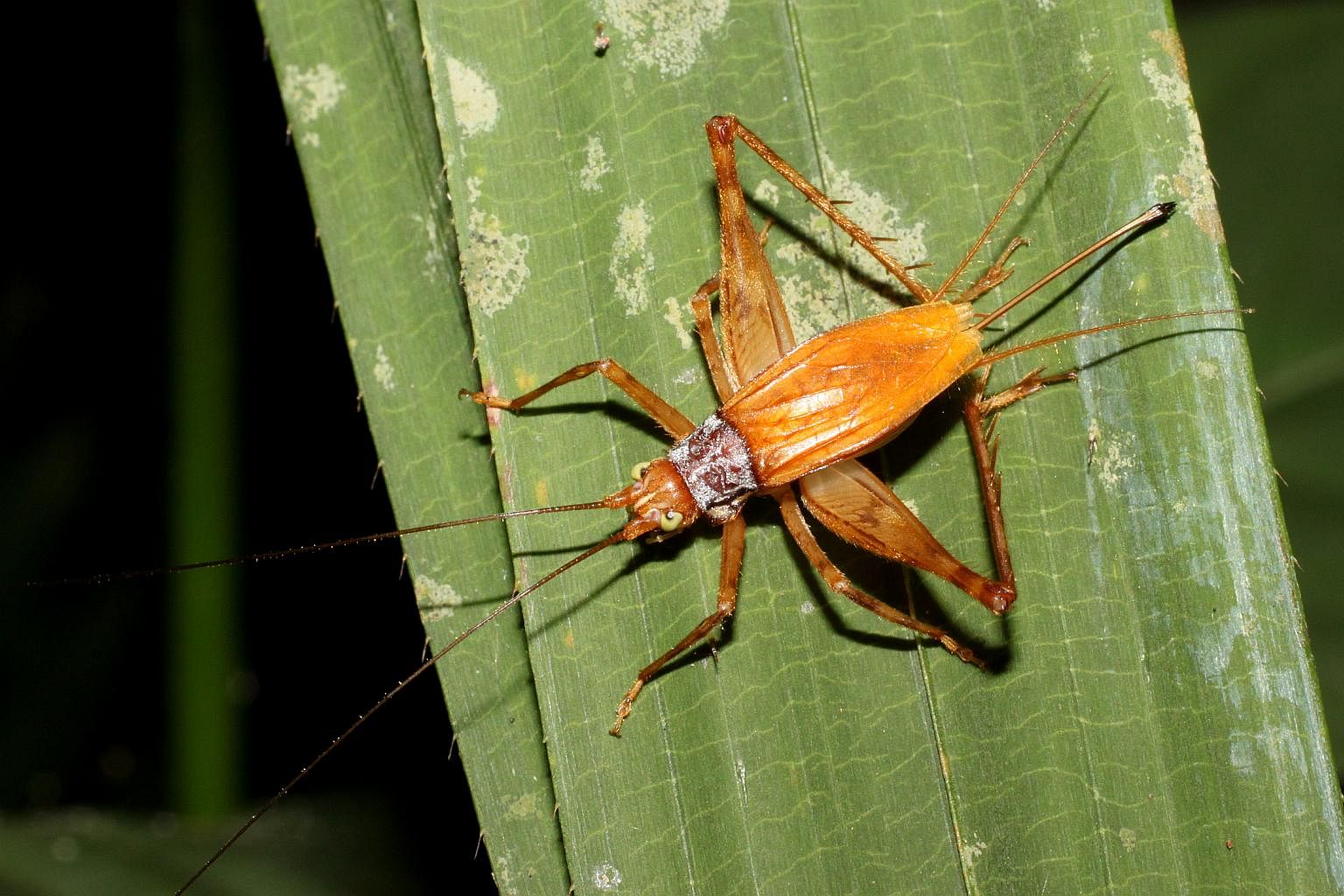Science graduate Tan Ming Kai is just 25, but he has already uncovered 35 species of crickets and their close cousins, the katydids, which are completely new to science. Here are some of them:
Nahlaksia bidadari

This cone-headed katydid from the Conocephalinae subfamily has a fierce appearance with its brown spotty body and black face, but in reality, it spends most of its days hiding inside hollow branches.
This species is named after the Bidadari Cemetery where it was initially discovered but it is more commonly found in the Bukit Timah and Central Catchment nature reserves.
Bidadari also implies nymph, which means an immature form of an insect that does not change greatly as it grows.
It is appropriate for this species as the adults have reduced wings and can be easily mistaken as juvenile katydids.
Cardiodactylus admirabilis

Most cryptic orthopterans are found in the nature reserves but this cricket was discovered at Admiralty Park. It was named admirabilis which means surprising in Latin as it was unexpected to discover a new species from a non-reserve parkland in a highly urbanised Singapore. It is so far endemic to Admiralty Park.
Lebinthus luae

A typical looking brown cricket, this species was found in the understory of a coastal forest in Singapore. It was named after Lee Kong Chian Natural History Museum insect curator, Ms Lua Hui Khen, for her selfless work in museum curation over the past thirty years.
Mr Tan said he named it after her because he was grateful that she had taught him the basics of insect curation, and had allowed him to work with the specimens in the collection.
"Without her guidance, it is hard to imagine the subsequent work that was made possible," he said.
Tremellia timah

Little is known about this orange cricket which can be found in the Bukit Timah and Central Catchment nature reserves, including its diet and life cycles.
Mr Tan said this epitomises the state of many invertebrates in Southeast Asia, including Singapore, and highlights the need for more research on these highly cryptic but abundant animals.
Ornebius tampines

Most people associate grasshoppers and crickets with grassy areas. This cricket - which has scales visible only under a microscope - was however discovered in the mangroves of Singapore. It was named after the Sungei Tampines river in Pasir Ris Park, where it was discovered.
Soft but high pitched chirps heard along the boardwalks of mangroves are likely the calls belonging to the males of this scaly cricket.
(Source: Tan Ming Kai, https://hoppingaround.wordpress.com/)
